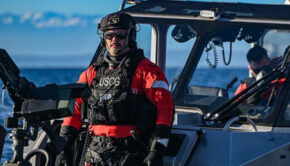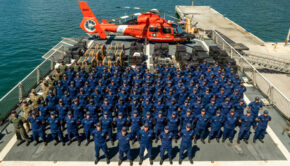CLASS 40: It’s on like donkey kong
Published on May 8th, 2013
The Atlantic Cup presented by 11th Hour Racing is a dedicated professional Class 40 race held annually in the U.S. The 2013 edition starts with a doublehanded leg on May 11 from Charleston, SC to New York, NY (648 nm), and another doublehanded leg on May 18 from New York to Newport, RI (260 NM). The event concludes on May 25-26 with inshore fully crewed (six people on board) buoy racing in Narragansett Bay.
Here’s an analyses of the race coursed and who to watch for among the seven teams…
It goes without saying that weather patterns will always be a major factor and the first leg also has the added challenge of the Gulf Stream current to contend with off the infamous Cape Hatteras. We won’t know what the scenario will be until the days prior to the start. Generally, as the race travels south to north through weather patterns that are shifting east to west, the boats will transition through many different conditions.
The worst scenario the fleet could face is a storm bringing northerly breeze as the boats transition around Cape Hatteras (the Cape Horn of the north), which can produce boat, and crew, breaking conditions. The combination of shallow water, up to 4 knots of current flowing North, and the unlimited fetch of a northerly swell can result in the most horrendous conditions you can find on the East Coast.
The three big challenges for the first leg are exiting Charleston Harbor as short tacking the 3nm out the jetties will be a demanding test of boat handling. Then in anything other than a northerly, the boats will head for the Gulf Stream and set up for a “max current” ride around Cape Hatteras. After Cape Hatteras, the critical decision will be how long to ride the stream before turning left and heading for New York. Last year, the boats that stayed in the Gulf Stream current the longest, although sailing farther, had the advantage. Of course, the more north easterly the breeze, the less advantageous staying with the current will be as it will put NYC at more of an upwind angle.
The approach and rounding of Cape Hatteras can also be a danger to man and boat and could no doubt be the deciding factor in the race. If the weather does not cooperate and brings stiff Northerly wind, the boats have two options, 1) Either tuck into Cape Lookout and Raleigh Bay to “duck” around Hatteras, minimizing the time in the Danger zone, or 2) cross the Gulf Stream and head offshore to avoid the worst of the conditions but sail crucial extra miles.
The third major challenge will be getting into New York Harbor. The approaches to New York are filled with shoals and are a challenge to navigate at the best of times. Throw in some heavy commercial traffic, an approach under the cover of darkness, two fatigued sailors, and the unknown of how Hurricane Sandy has altered the shoals, and this will be an intense time for the crews and could mean the difference between finishing first or last.
Read on http://atlanticcup.org/the-expert-previews-the-2013-atlantic-cup/







 We’ll keep your information safe.
We’ll keep your information safe.